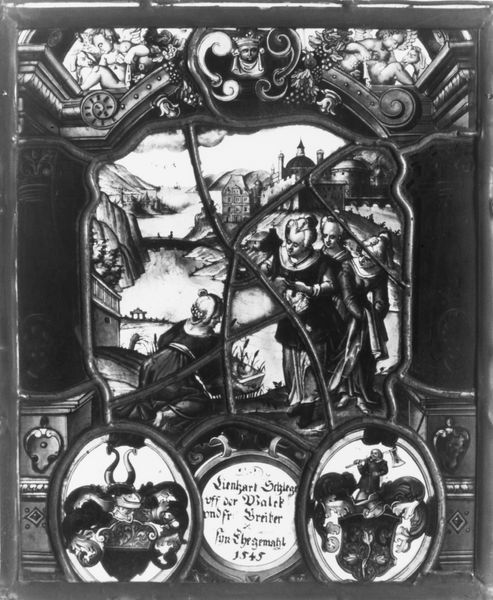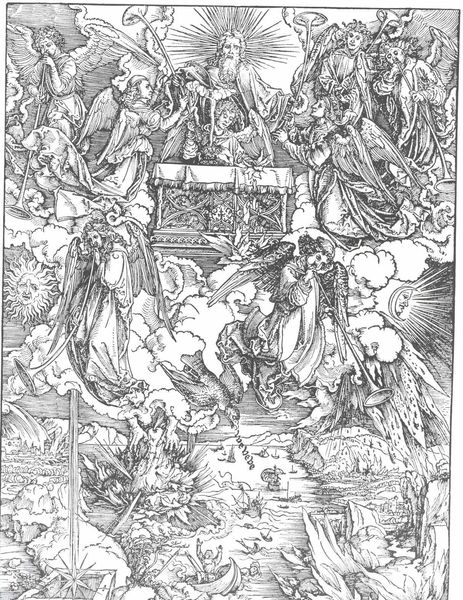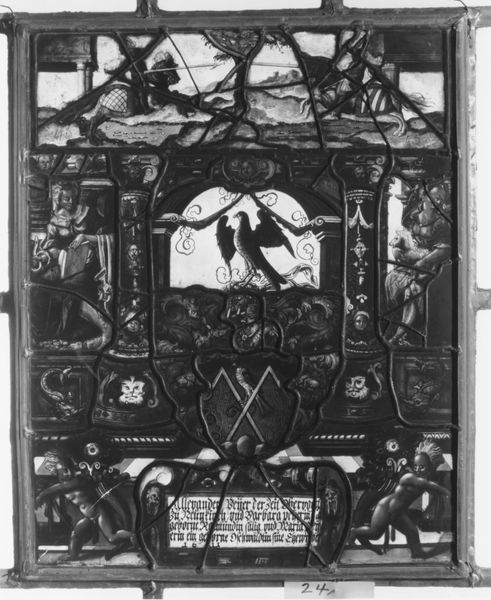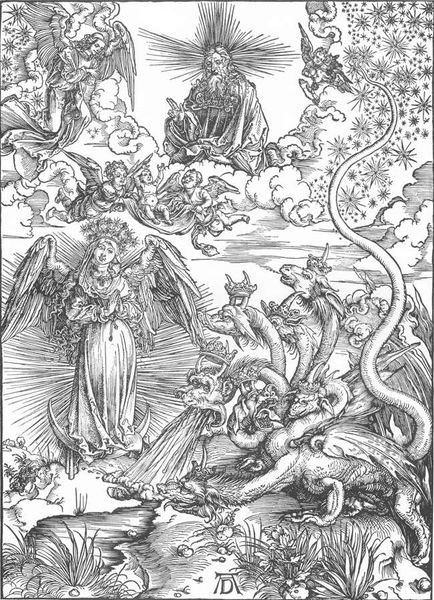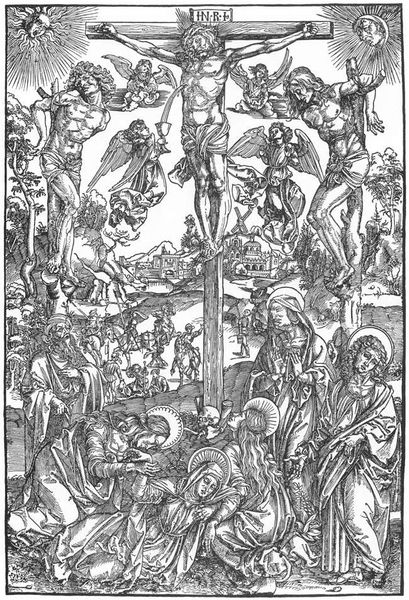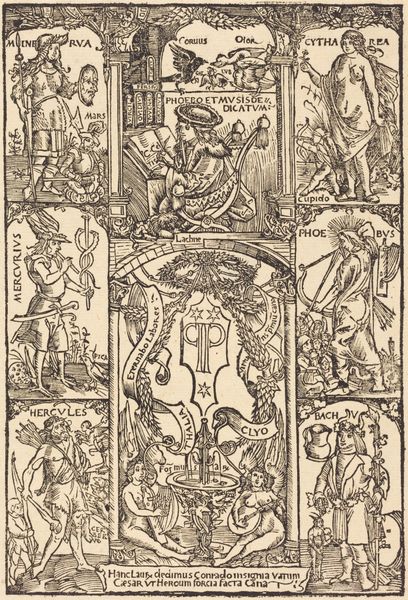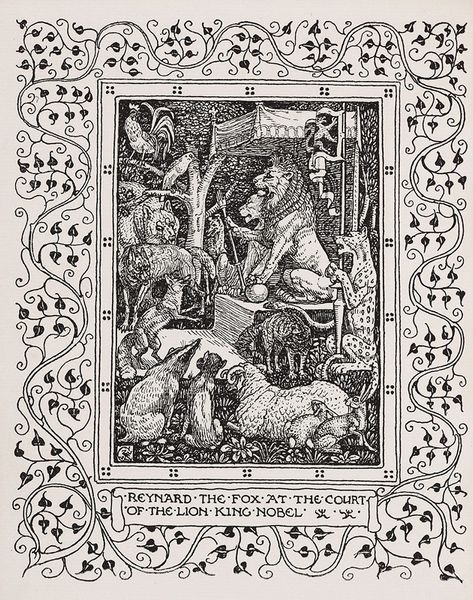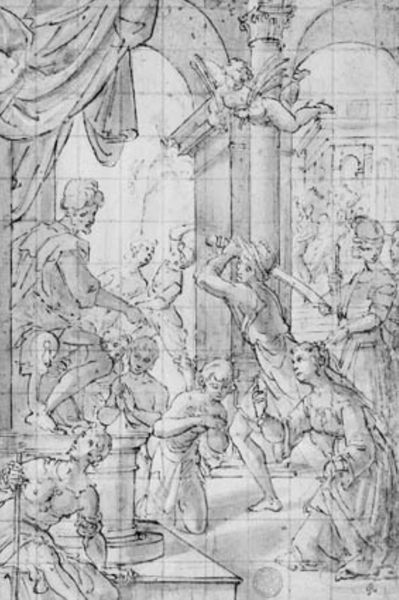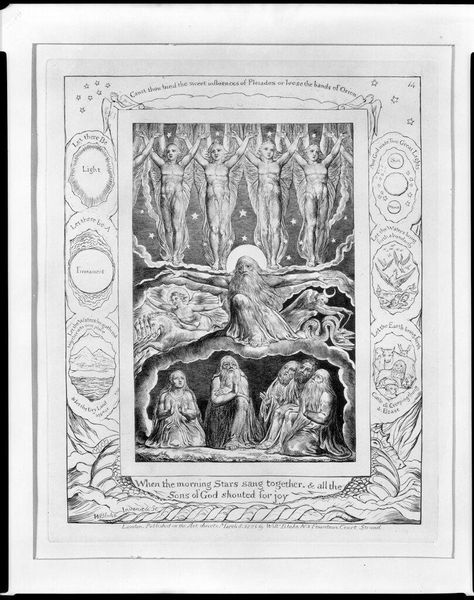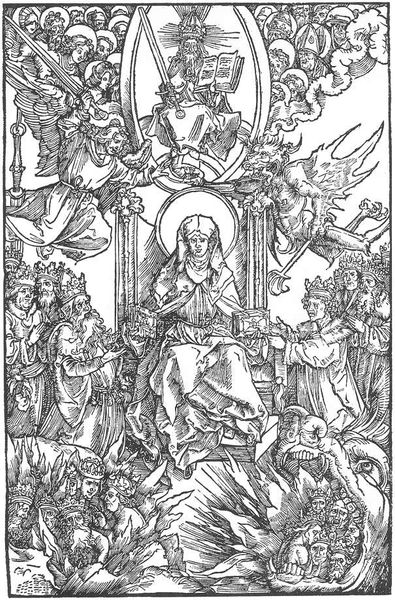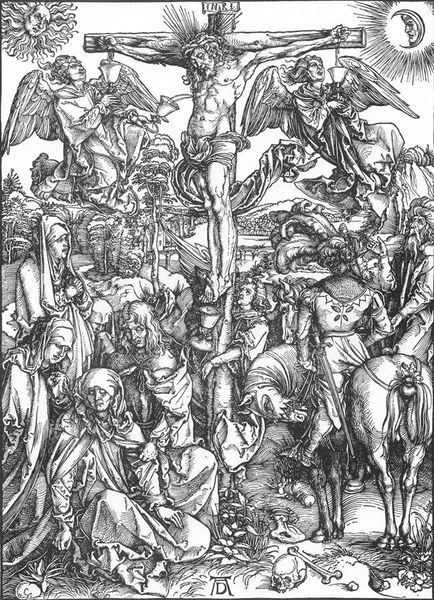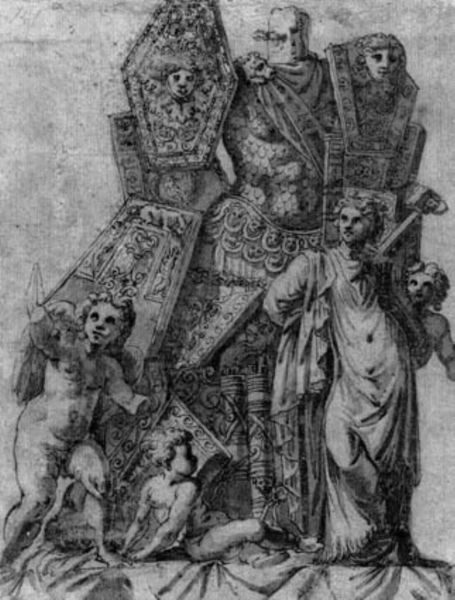
drawing, graphic-art, ink, pen
#
drawing
#
graphic-art
#
narrative-art
#
pen drawing
#
pen illustration
#
figuration
#
form
#
ink line art
#
ink
#
arch
#
christianity
#
pen work
#
pen
#
northern-renaissance
Copyright: Public domain
Albrecht Dürer’s depiction of St. George presents us with a rich tapestry of symbols, a veritable theater of archetypes rendered in ink. The lance, wielded by St. George as he pierces the dragon, transcends mere weapon—it's a symbol of divine intervention. It echoes the cross, signifying faith’s triumph over the monstrous and chaotic. The dragon, writhing in its death throes, is not simply a beast; it embodies primordial fears and subconscious urges. We find the dragon motif throughout cultures—from ancient Mesopotamia to the Far East—each iteration reflecting humanity's grappling with the unknown and the repressed. Carl Jung would certainly note how such images are lodged deep within the collective unconscious, recurring across epochs and geographies. Note the princess, often a figure of innocence and purity, awaiting rescue. This mirrors the classical damsel in distress, a figure whose vulnerability elicits a powerful protective response, engaging the viewer's deepest empathetic instincts. And so, the dragon is vanquished, but the deeper currents of the psyche remain, subtly shifting and resurfacing, as potent today as in Dürer’s time.
Comments
No comments
Be the first to comment and join the conversation on the ultimate creative platform.
